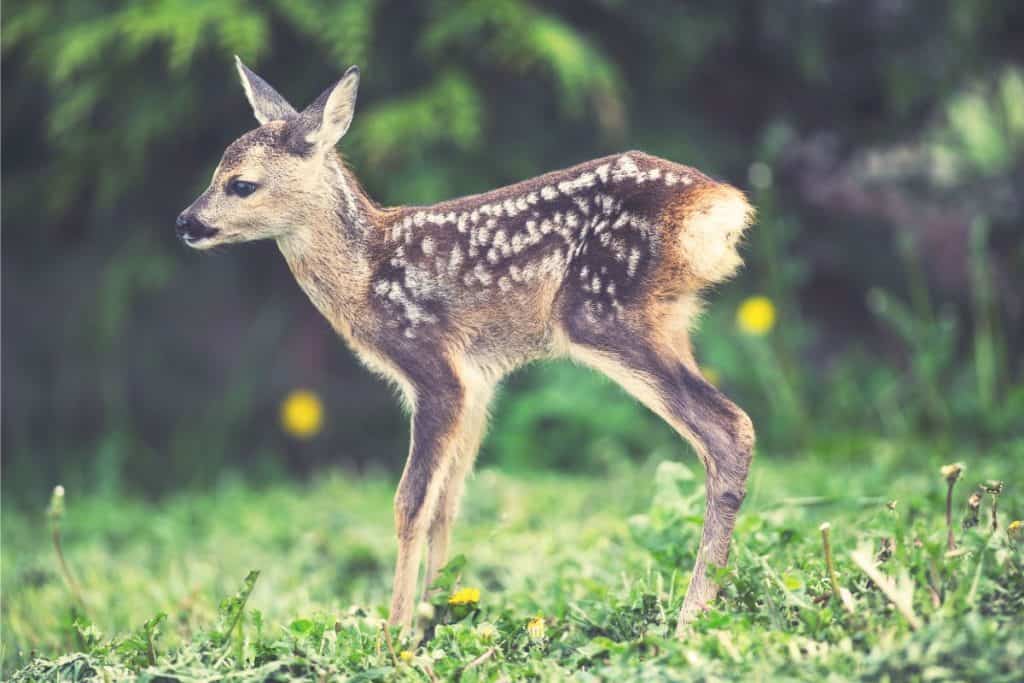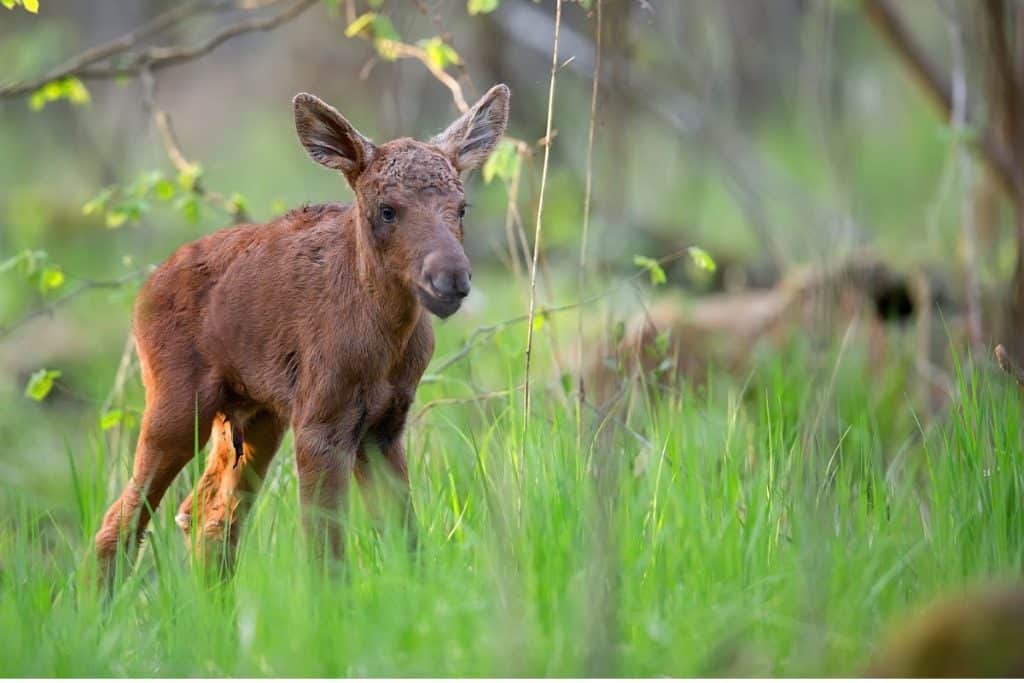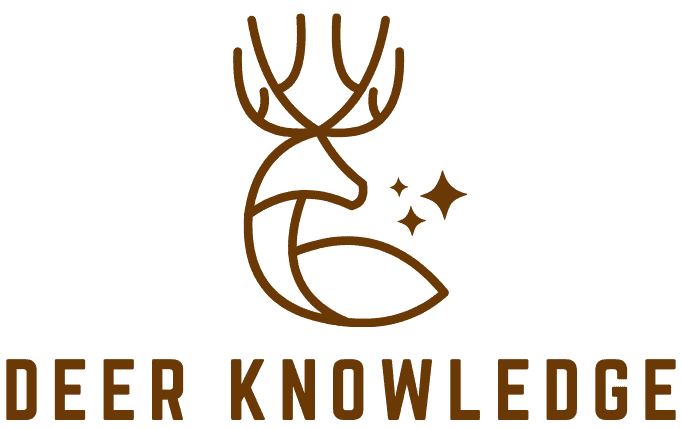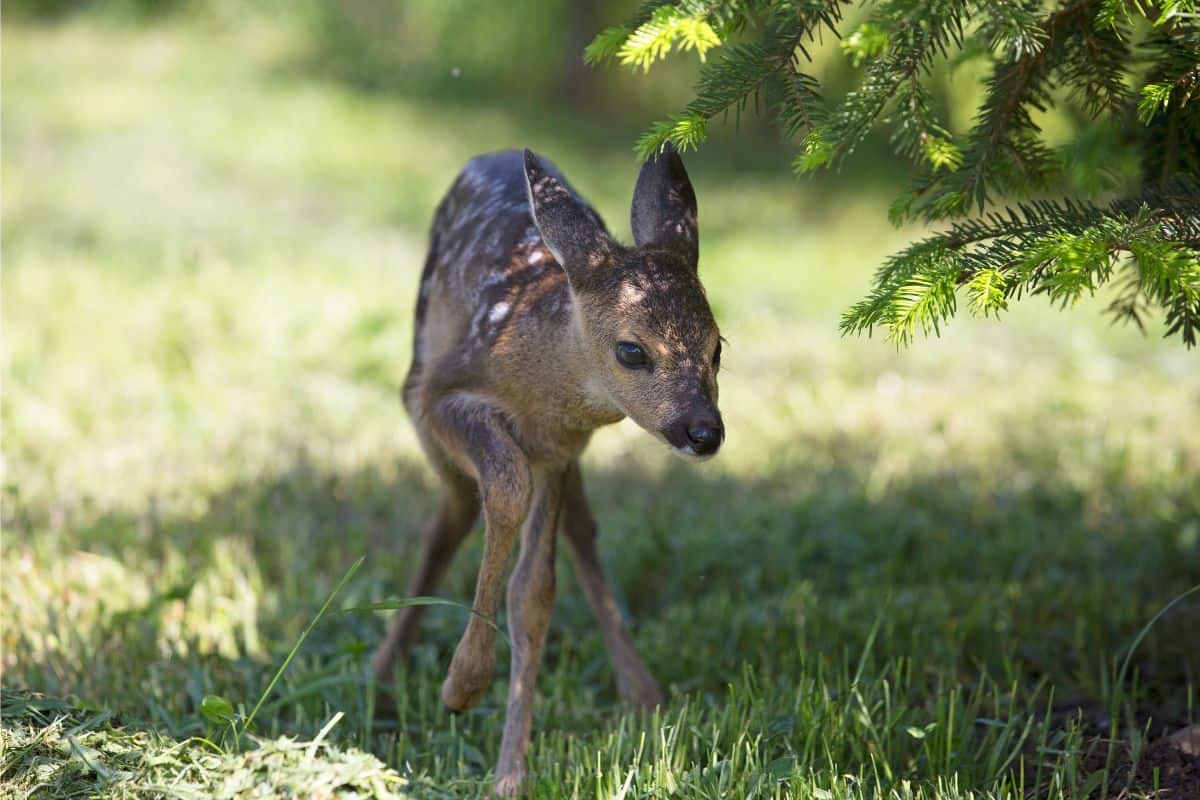Adult deer have lots of different names that depend on their species, gender, and location.
For instance, a male Moose is often referred to as a bull, whereas a male red deer is more commonly referred to as a stag. The same is true of female deer, with some species of deer having their females referred to as cow or hind rather than a doe.
With that in mind, what then is a baby deer called? Are there different terms just as there are for adult deer?
What Do You Call a Baby Deer?
A baby deer is most commonly referred to as a “fawn.” However, in some species of deer, a young deer is called a “calf.” Factors such as species of deer, geographical location, and cultural norms will influence the most appropriate moniker for a baby deer.
With that in mind, let’s take a look at which names correspond to which baby deer.
Baby Deer Called Fawns
Fawn refers to the name given to the offspring of small to medium-sized deer species, including but not limited to white-tailed deer, muntjac, and water deer.
The term “fawn” is derived from the Middle English word “faun,” which in turn came from the Old French word “faon.”

Baby Deer Called Calves
Not all deer species use the term fawn to describe their young, and this is particularly true of large deer species such as moose, elk, or reindeer (caribou). For these deer species, offspring are most commonly referred to as calves.
This moniker is in line with the name chosen for many other larger mammal species such as cows, giraffes, and elephants.
Why Do Baby Deer Have Different Names?
Naming conventions differ between baby deer and adult deer for a few reasons. The most likely explanation is that the different names help to distinguish between baby deer and their parents.
In many cases, like with moose or red deer, the calves are born much larger than fawns, making it easier to tell them apart with distinct names. In other cases, naming conventions are more likely due to geographical location or cultural reasons, meaning the same types of deer offspring can end up having different names.
Which Are More Common: Fawns or Calves?
Regarding baby deer, fawns are more common than calves. This is mainly due to the fact that fawns are used to describe baby deer of a wide range of medium to small deer species, whereas calves are most often used for baby deer of larger species.
The term calf is almost exclusively limited to large cervid species, including moose, elk, red deer, and reindeer (caribou). By contrast, the term fawn can be applied to baby deer of a wide range of cervid species, including white-tailed deer, muntjac deer, water deer, and more.
How Do You Tell the Difference Between a Fawn and a Calf?
The primary differentiating factor is the size of the deer. Fawns are born much more diminutive than calves, and, as they grow older, they do not get nearly as large as their calf counterparts.
Other than size, the easiest way to tell a fawn and a calf apart is by their coloring. Fawns are most often born with spots on their fur, which they typically lose as they get older. Calves, on the other hand, are often born with little or no spots, particularly for larger species such as moose, elk, and reindeer (caribou).

Final Thoughts on Baby Deer Names
In summary, the most prevalent name for a baby deer is “fawn.” This word is most commonly used for baby deer of medium to small cervid species, such as white-tailed deer.
However, baby deer of larger cervid species (including moose and elk) are instead referred to as “calves.” The primary difference between the two terms is size, with fawns typically being smaller than calves.
Hopefully, you now have a better understanding of baby deer and the names given to them. Next time you see a baby deer in the wild, you’ll now be able to decipher whether it’s a fawn or a calf.

